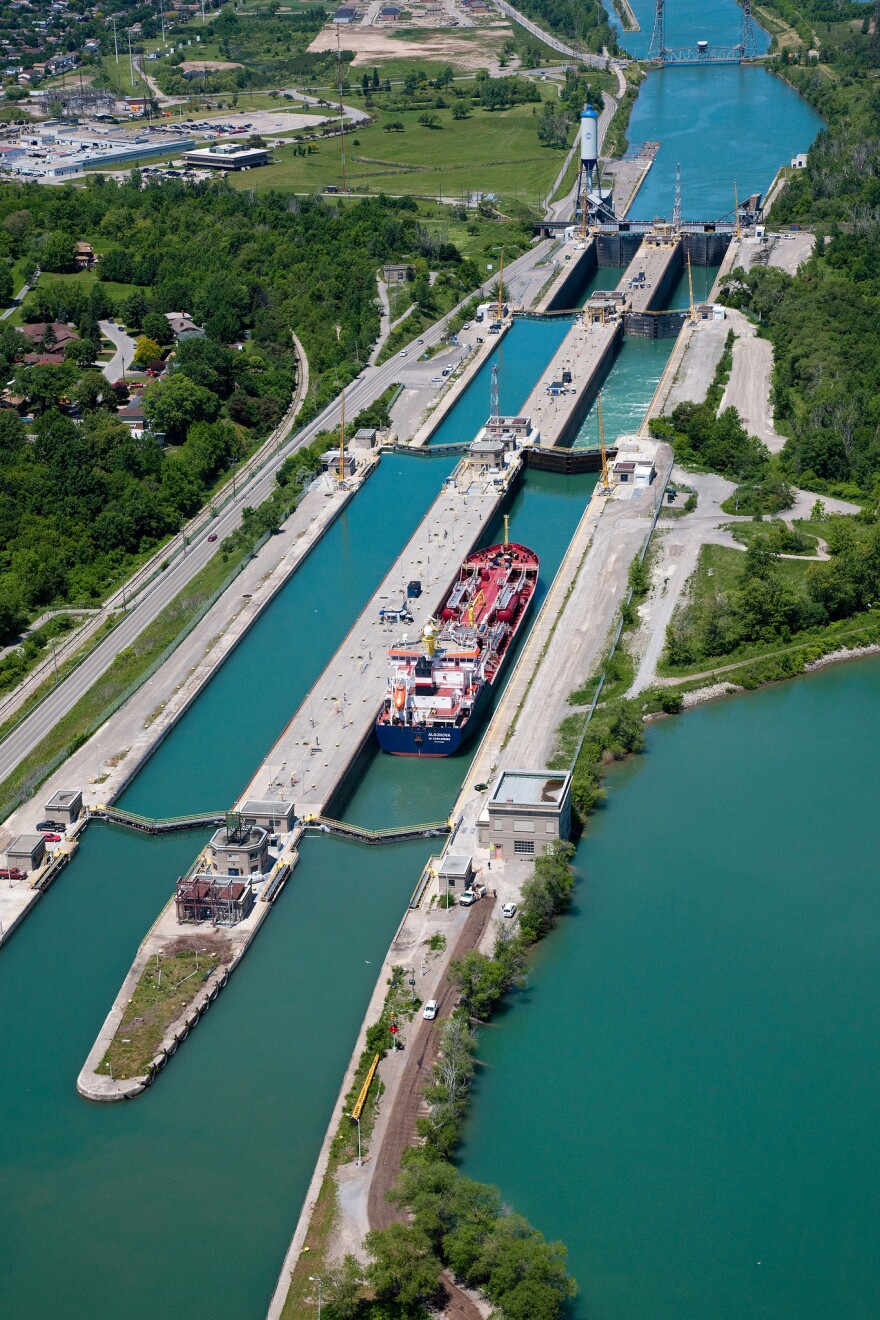The historically high water levels on the Great Lakes and St. Lawrence River this year have presented those in the shipping industry with both challenges and opportunities.
Bruce Burrows, president of the binational Chamber of Marine Commerce, says $50 million in economic activity is generated each day on the St. Lawrence Seaway. That's been disrupted this year thanks to the record sustained outflows of water passing from Lake Ontario to the St. Lawrence River.
"Well, it’s certainly an unusual year," Burrows said. "The output is about equivalent to four olympic swimming pools per second of water now flowing."

The draining of Lake Ontario is meant to provide some relief to shoreline communities experiencing flooding. It's doing the opposite for captains who are now dealing with strong currents and speed restrictions. Burrows says that has slowed down cargo deliveries along the St. Lawrence River and Seaway. But it has not stopped shipping like it did in 1993 when water levels were also very high. Burrows credits that to advancements in technology and other innovations.
"We have ships which are much more sophisticated and able to manage these sorts of conditions the safety systems and navigation's systems are all much improved," Burrows said.
Elsewhere in the Great Lakes, the higher water levels are actually an asset for pilots. Capt. George Haynes with the Lakes Pilot Association says that's because there's less of a risk of running aground. And in Lake Erie, Haynes says the deeper water level is allowing freighters to load ships with more cargo than he's ever seen before.
"There’s more economic benefit, more efficiency for the freighters moving cargo," Haynes said. "So it’s good in that way."
Whether on Lake Erie or the St. Lawrence River, Haynes says all captains are proceeding with caution because of high currents and the risk of causing wakes that could cause damage along the shoreline.








